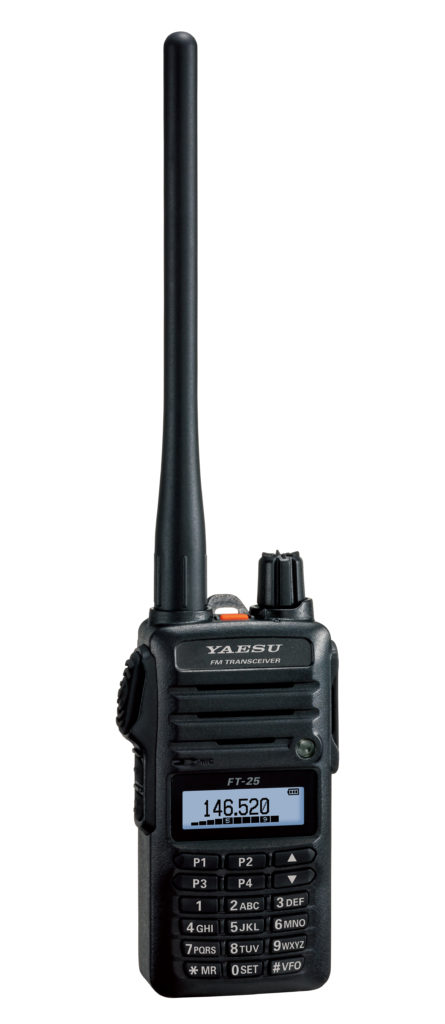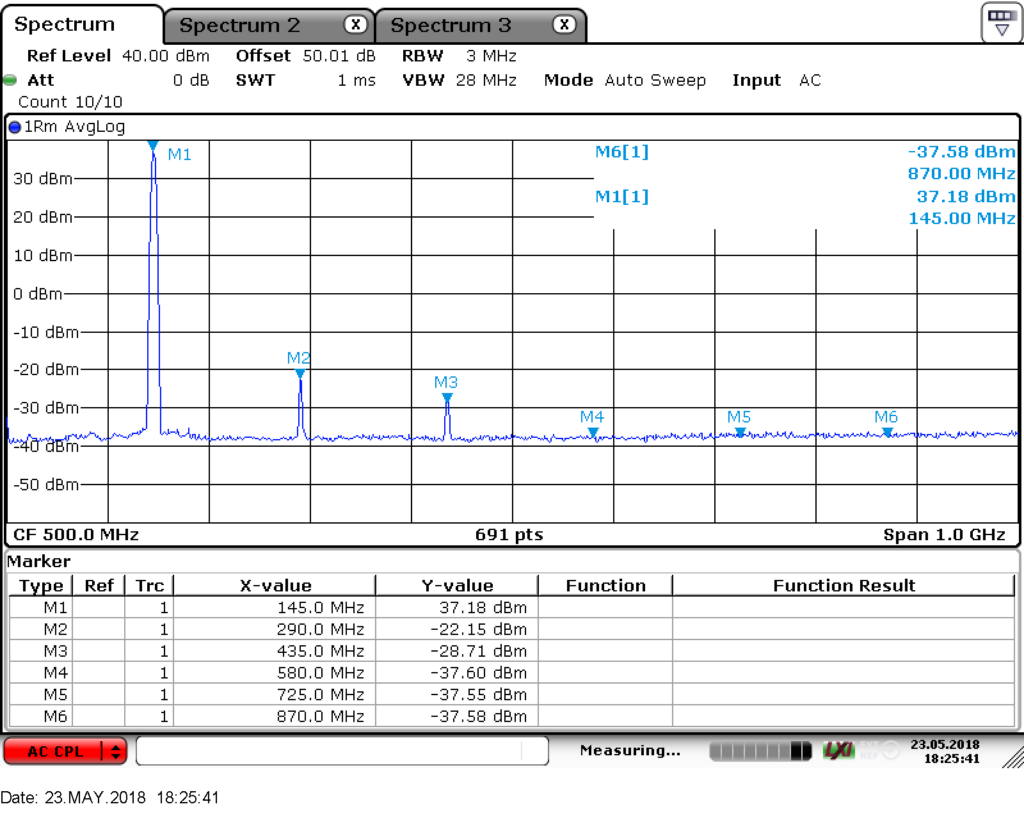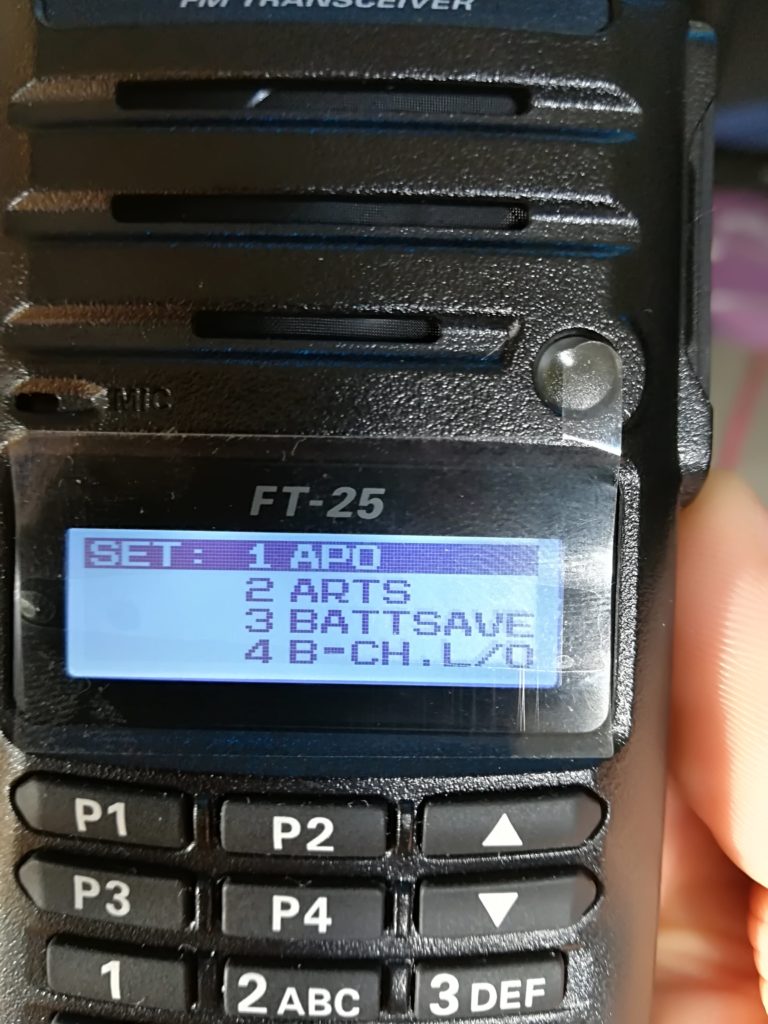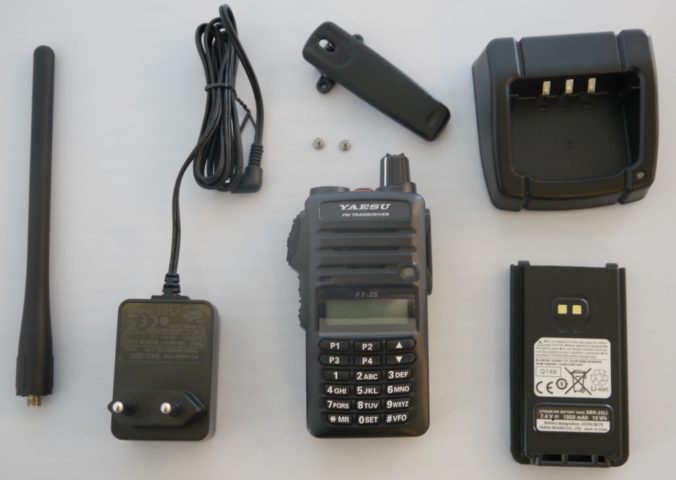In the Norwegian amateur radio magazine “Amatørradio” no. 3 2018, ARK has collaborated with NRRL and Christech on performing and writing a test of the Yeasu FT-25E handheld VHF radio. The following is a translation of this article, to the benefit of our English readers.
Test of Yeasu FT-25E
FT-25E is a nice and easy handheld radio, without unnecessary bells and whistles. The radio is a purist radio that is very good at what it does. It outputs 5 W FM on the 2-meter band, and can listen on frequencies between 65 MHz and 174 MHz. With a pricing of 1129 NOK (140.5 $) it is a suitable radio for those who want to communicate with local amateurs, or participate in missions with emergency communication groups.
The radio is a descendant of Yaesu’s rugged FT-250 and FT-270 series. In addition to revising the design, Yaesu has managed to lower the price to meet increasing competition from companies such as Woxun and Baofeng in this market segment.

FT-25E. Source: https://www.yaesu.com
Build quality:
FT-25E uses the new Yaesu chassis style that is also seen on the models FT-65E and FT-4XE. Without the antenna it is approximately 12 cm tall, 6.5 cm wide and 3 cm deep. The outer chassis is made of cast plastic of high quality, and the more sensitive insides have a casing of cast aluminum. At the seam between battery and radio, there is an o-ring for enhanced splash protection. The radio is approved for IP-54 dust and water ingression, which means that it is close to dust proof and slightly splash resistant. An upgrade to a IP-X7 rating (waterproof down to 1 meter), which we see on some of Yaesus more expensive models, would have been nice to have for those times when the radio is accidentally dropped in a puddle.
The strongest quality of the radio is the extremely tactile buttons. The PTT-button is so tactile that you will definitely be able to feel the click, even through thick mittens.
Additional accessories include a nice and sturdy belt clip, and a rapid charger. With a charging time of 3.5 hours the author wonders if the rapid part really is relevant.
RF Testing:
| Measured @ 145 MHz | Claimed | Measured | |
|---|---|---|---|
| Weight | 260 g | As specified | |
| Freuquency coverage | 65 – 174 MHz | As specified | |
| Modes | FM – F2D, F3E, F2A | As specified | |
| Power consumption on battery 7.4 V | |||
| RX 200 mW Audio | 205 mA | Not measured | |
| RX 100% Vol, SQL off | Not specified | 300 mA | |
| RX 50% Vol, SQL off | Not specified | 170 mA | |
| RX SQL on | Not specified | 70 mA | Floats between 45 mA and 90 mA |
| Standby, Saver Off | 100 mA | Not measured | |
| Standby, Saver On | 18 mA | Not measured | |
| Auto Power Off | 4 mA | Not measured | |
| TX 5W | 1.5 A | 1.4 A | |
| TX 2.5W | N/A | 0.93 A | |
| TX 0.5W | N/A | 0.48 A | |
| Receiver | Direct-conversion architecture | ||
| Sensitivity 12 dB SINAD | 0.2 uV | -124.5 dBm | 0.141 uV |
| 20 kHz/Adjacent channel IMD | N/A | -14.5 dB | Blocker that results in 1 kHz target tone and 1.1 kHz interferer to be equal level, or drops 1 kHz tone 3 dB down |
| 10 MHz IMD Wide band blocking | N/A | -82.5 dB | |
| LO leakage | N/A | <-126 dBm | Noise limited in measurement setup |
| 12 kHz Selectivity | -6 dB | -4.5 dB | |
| 35 kHz Selectivity | -60 dB | >-70 dB | Input compression limited measurement |
| Audio output EXT 10% THD | 0.8 W @ 16 Ohm | 0.57 W @ 16 Ohm | |
| Transmitter | |||
| Power high | 5 W | 5.21 W | |
| Power medium | 2.5 W | 2.46 W | |
| Power low | 0.5 W | 0.45 W | |
| Max deviation | “+/- 5 kHz” | Not measured | No applicable deviation source available. |
| Frequency stability | “+/- 5ppm” | 0.3 ppm | |
| Spurious high power | >60 dBc | >51 dBc | Conducted measurement |
| Spurious medium power | >60 dBc | >55 dBc | Conducted measurement |
| Spurious low power | >40 dBc | >67 dBc | Conducted measurement |
| Transmit-receive turnaround | N/A | 145.6 ms | |
| Receive-transmit turnaround | N/A | 33 ms |
The sensitivity of the radio is as good or better than most models on the market. Oftentimes, the reception is noise limited before being limited by the sensitivity. To this end it would have been nice to have better performance from the channel filter between 10 kHz and 20 kHz, to help with noise from adjacent stations. Once the blocking source is beyond 20 kHz it is very well attenuated, as this is when the digital filter kicks in – giving excellent wide band noise protection.

Spectrum view of the output power and harmonic content of the high setting on Yaesu FT-25E.
One of the main advantages of buying a radio of a recognized brand such as Yaesu, is that the user is guaranteed a radio that is up to standards. However, on the spurious emissions test for 5 W output power the FT-25E shows marginal performance. The radio struggles to keep the second harmonic below the Norwegian limitation of -26 dBm, and is measured at -22.15 dBm. Luckily the remainder is easily compensated for by adding an antenna that has sufficiently bad SWR to attenuate the second harmonic. In the case of the supplied antenna, the radiated power on 290 MHz is less than 14 % of supplied power – meaning that the radiated power of the second harmonic is below -30 dBm. This is still something to keep in mind if you intend to use the radio with a broadband antenna, such as a discone.
Note: Yaesu may have measured this parameter using the supplied antenna in a radiated emissions setup, contrary to the conducted tests that were done in this review. It should also be noted that the Norwegian limit is a lot stricter than many other countries, e.g. Part 97 of the FCC allows for -16 dBm.
General usage:
FT-25Es built-in speaker delivers nice and bright audio. At the loudest setting, there is noticable clipping, however. There is also some static noise when receiving weaker signals.

The radio has a very good menu system, which is not typical for devices of its kind.
After consulting the manual on what buttons did what, the author was able to configure all features simply by the feedback from the menu system, without having to further consult the manual. Newer amateurs might find that there are a lot of unknown abbreviations within the menus, luckily the manual gives a good description of what each option does.
One irritating feature is that the PTT-button is used to confirm menu choices. This frequently leads to the radio transmitting out of turn. Additionally the buttons are not clearly labeled, meaning that many of the speed-dial functions are likely never going to see any use.
Conclusion:
Overall the FT-25E is a neat, rugged radio with an unusually good user interface. It is an excellent buy for both new and experienced amateurs who are looking for a radio that delivers what it promises, without adding needlessly complicated gizmos. If you are a type of person that appreciate the call-function of a cell phone above all else, this is a radio for you.
Thanks to Christech for lending us the review sample.


Nice to read a real review with figures !
But, what are the measurement conditions (t & m devices on the bench)?
73
Laurent F1NFY
Thanks!
The measurement equipment is:
– Rohde & Schwarz FSVR 20 spectrum analyzer for RF and audio measurements
– Rohde & Schwarz SMB100A Signal generator as signal source
– 2x Agilent 8648C for two tone and blocking tests
– Agilent DSO5034A for T/R switching time analysis
– HP 8753E Network Analyzer for analyzing the antenna
73
Øyvind/LA3WUA